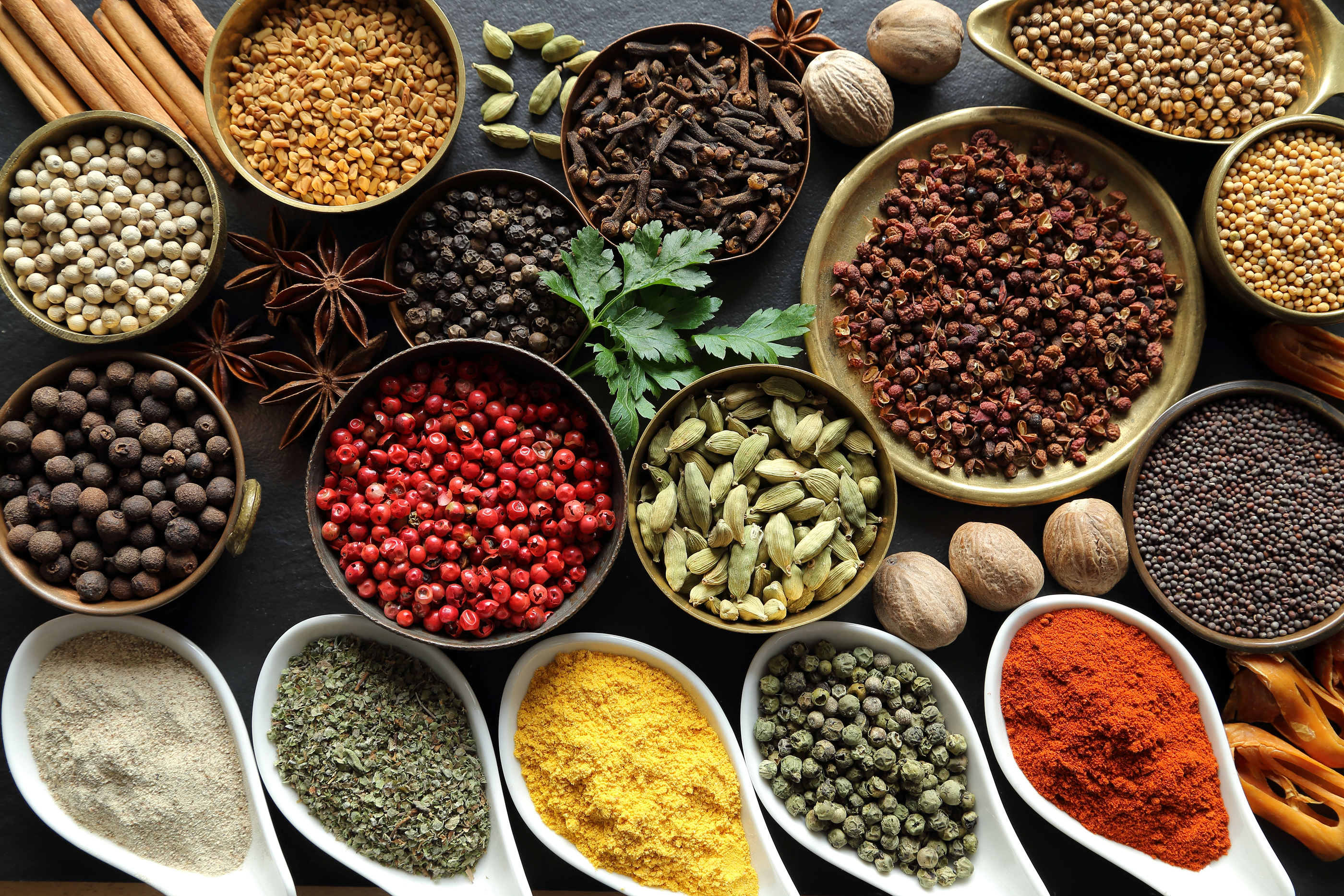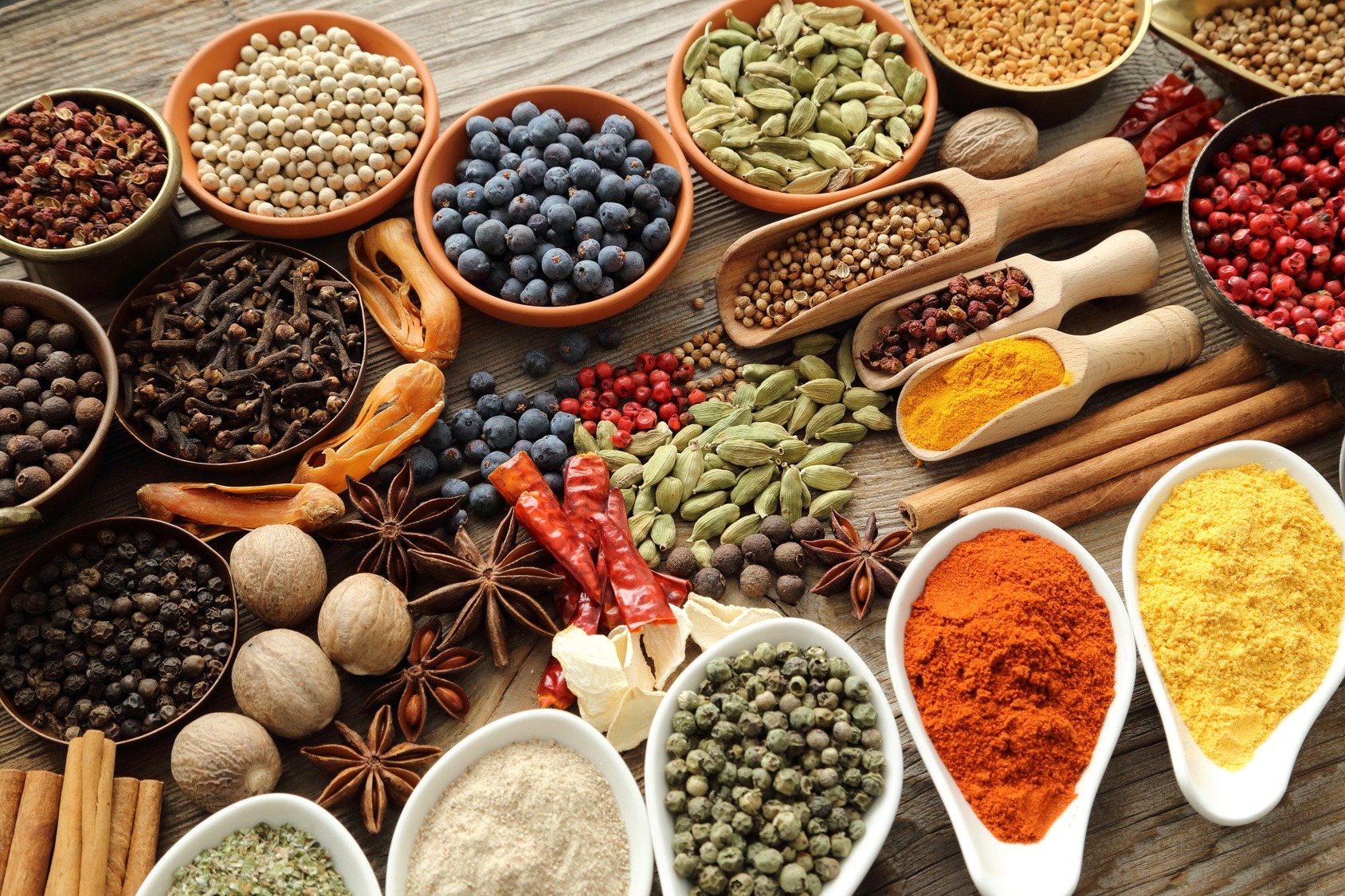But it is not simply about providing delicious recipes for saffron dishes – it is also about promoting sustainable eating that respects those from all different cultural backgrounds who dedicate their lives to serving fantastic meals in both family homes and 5-star restaurants across the globe.
If you have a special recipe or would like to contribute an article to our blog section, please reach out as we would love to hear from you at [email protected]. We believe everyone has something extraordinary to offer their taste buds!
For now, love yourself and enjoy this one ...
Cultivating a spice garden is a rewarding and aromatic journey that brings fresh, flavorful ingredients right to your kitchen. Whether you have a sprawling backyard or a small windowsill, growing your own spices is easier than you might think. This guide will walk you through the basics of DIY spice gardening, from planting to harvesting.
Choosing Your Spices
- Assess Your Space: Consider the amount of space you have, as some spices require more room to grow.
- Climate and Conditions: Select spices that will thrive in your local climate and environmental conditions.
- Popular Options: Some easy-to-grow spices include basil, cilantro, mint, parsley, chives, and dill. For more advanced gardeners, try growing cardamom, ginger, or turmeric.
Starting Your Garden
- Seed vs. Seedling: Decide whether to start from seeds or seedlings. Seeds are more cost-effective but take longer to grow, while seedlings offer a quicker start.
- Soil Preparation: Use high-quality potting soil that drains well. Spices generally prefer soil that's slightly acidic to neutral.
- Containers vs. Ground Planting: DIY spice gardening needs some careful planning. If space is limited, containers are a great option. Ensure they have adequate drainage holes.
Sunlight and Watering Needs
- Sunlight: Most spices need about 6-8 hours of sunlight per day. If growing indoors, a south-facing window is ideal.
- Watering: Keep the soil moist but not waterlogged. Overwatering can lead to root rot and other diseases.
Fertilizing Your Spice Plants
- Organic Fertilizers: Opt for organic fertilizers like compost or fish emulsion, which are gentle on the plants and add nutrients to the soil.
- Regular Feeding: Feed your spice plants every 4-6 weeks to ensure robust growth.
Pest Control and Maintenance
- Natural Pest Control: Use natural pest control methods like neem oil or insecticidal soap to deal with common pests like aphids and spider mites.
- Pruning: Regularly prune your spice plants to encourage growth and prevent them from becoming leggy.
Harvesting Your Spices
- Right Time to Harvest: Harvest your spices when they are mature but before they flower for the best flavor.
- Harvesting Technique: Use clean, sharp scissors or pruners to cut the leaves or stems. For roots like ginger, gently unearth them when they are plump and aromatic.
Drying and Storing
- Drying Methods: Dry your harvested spices by hanging them upside down in a warm, airy place or using a food dehydrator.
- Storage: Once dried, store your spices in airtight containers in a cool, dark place to preserve their flavors.
DIY spice gardening is a fulfilling endeavor that enhances your cooking and connects you to the food you eat. With some basic knowledge and care, you can cultivate a variety of spices, enjoying the freshest flavors and aromas right from your garden. The process of growing, harvesting, and using your own spices not only adds a special touch to your culinary creations but also brings the satisfaction of self-sufficiency. Whether you're a seasoned gardener or a beginner, the world of spice gardening awaits!
So now you know how to grow your own spices. But what about keeping their freshness once they're harvested and stored? Check out this post for some of our tips! Preserving Freshness: Best Practices for Storing Spices
Frequently Asked Questions
Does Thai use ginger?
Yes. Ginger is used extensively in traditional Thai cooking. Ginger is often used to make stir-fries and soups. It is also used in desserts, drinks, such a lassis.
Ginger is native to China, Japan, and Korea, and its origins date back more than 5,000 years. It is believed it originated in Southeast Asia. There, it was used for medicinal purposes.
Ginger has been known to improve digestion and reduce nausea. It may even help prevent migraines. Ginger can also be used to treat arthritis, muscle spasms, joint pains, or relieve them.
In Thailand, ginger is most often used fresh. It is then cut into thin strips and dried. Ginger root can be purchased in cans or jars at Asian markets.
What is the value of spices?
Spices are seasonings that enhance the flavour of food. Spices can come in many forms: powders or liquids, oils, pastes or seeds, as well as liquids and gums. They can also be called condiments or flavours.
A great way to spice up your meals is to add some variety. Many spices can be added for additional flavor and excitement.
A few drops of hot sauce can make a soup taste better. You could also add a few cayenne peppers to a cup of rice.
You can experiment with spice recipes best if you use fresh ingredients. Look for organic dried herbs when you purchase them. Fresh herbs last longer than dried.
There are certain spices that are essential for cooking. But there are also some you might want to avoid. Cinnamon sticks contain high amounts of coumarin, so they should not be eaten if you have a history of liver disease. Although ginger also contains coumarin it is much less concentrated. People who do not have any liver problems are safe.
Which Thai spice do I need to cook Thai food at home?
You will need to know five key spices in order to make authentic Thai food at your home: cayenne pepper, coriander seeds and turmeric. Each ingredient has its own unique flavour profile, and each plays an important role in creating delicious dishes.
Black pepper adds savoury flavours, while cinnamon adds sweetness. Coriander seeds add a spicy kick, while turmeric gives curry powder its signature yellow colour. Cayenne peppers bring the heat while cilantro adds freshness. The final touch is cinnamon which gives depth and complexity to any dish.
You can buy each of these spices in your local grocery shop, or you can order them online.
Can garlic be used in Thai cooking
Thai cuisine makes use of garlic. Garlic is used often in Thai cuisine, such as soups, stir fries, curries, sauces, and salads.
In Thailand, garlic is chopped and fried with shallots, ginger, and spices. Additionally, garlic is often eaten with sticky Rice.
Garlic is best chopped finely and mixed with oil, chilli paste, fish sauce, lime juice and oil. This mixture is called Nam Phrik (namphrik). Nam phrik is often served with grilled chicken or beef.
What is the content of cumin in Thai food?
Cumin is one of the most commonly used spices in Thai cuisine. Many Thai dishes are made with cumin, garlic, ginger and coriander.
Some popular uses for cumin in Thai cooking include stir-fries, curries, soups and salads. Cumin can also be added to sauces, marinades and dressings. While cumin gives Thai food its distinctive flavour, other spices are also at play.
The mix can be enhanced with fish sauce, garlic, ginger, chilli peppers and ginger. These spices can be combined in different ways to create authentic Thai dishes.
Cumin is an essential ingredient in Thai cooking. It is used in many Thai traditional dishes. The complex flavours of cumin add a special flavor to Thai cuisine. Cumin can be used to add unique spices to many Thai dishes.
The unique flavors of Thai cuisine can be captured by chefs adding spices like cumin to their meals. It is important to include cumin in traditional Thai dishes.
What spices can be used in Thai cooking
Thai cuisine is famous for its complex flavor profiles. These flavor combinations are made with unique and delicious spices that produce many delicious dishes.
Thai cuisine uses common ingredients such as galangal (lemongrass), kaffir lime leaves and chillies.
Each one of these spices adds to Thai cuisine’s unique flavour profile. The most common uses of lemongrass are in soups, curries, stews, and galangal; galangal is used to add a little peppery kick to dishes, kaffir lime leaves give dishes a citrusy scent, chillies are spicy; shrimp paste gives food an umami flavour; garlic provides a sharp, pungent flavor; cilantro adds a mild aroma to dishes, cumin lends a smoky taste, while turmeric gives dishes a vibrant yellow hue.
Together, these spices combine to create complex flavour profiles unique to Thai cuisine. By using a combination of spices, chefs can create dishes that are both flavorful and aromatic. You can bring Thai flavors to your kitchen by stocking up on these spices.
What are the principal Flavours in Thai Cuisine?
Thai cuisine includes several distinct regional cuisines. There are five main types of Thai cuisine: Northern, Central, Southern and Eastern. Each region is unique in its flavour profiles.
Thai food can be described as sweet, salty or sour.
Sweetness is essential for Thais because it makes the dishes palatable. Thai cuisine includes sweet ingredients like palm sugar (gulamelaka) or coconut milk.
Thailand is also a popular place for sourness. Hot dishes are often served with sour foods. This combination balances out the heat.
Spicy food is another crucial ingredient in Thai food. Thai cuisine uses a lot of spices, including galangal ginger root, chilli pepper, and garlic.
Statistics
- Their 14 to 20 percent essential oil content means that cloves have the highest concentration of aroma compounds of any spice. (masterclass.com)
- It has been estimated that around 1,000 tons of pepper and 1,000 tons of other common spices were imported into Western Europe each year during the Late Middle Ages. (en.wikipedia.org)
- According to the McCormick Science Institute, indigenous Indian spices were cultivated as early as the 8th century BC in the gardens of Babylon. (spicecravings.com)
External Links
[TAG23]
[TAG26]
[TAG29]
- Amazon.com. Spend less. Smile more.
- Amazon.com : Morton & Bassett Whole Nutmeg 1.9 Oz : Nutmeg Spices And Herbs : Grocery & Gourmet Food
[TAG32]
- Vanilla
- Herbs and Spices- Biomarkers of Intake Based on Human Intervention Studies - A Systematic Review
How To
How to Make A Garlic Press
A garlic press is one of the most valuable tools in any home cook's arsenal. It can be used to quickly mince garlic into a paste. It is great for crushing whole garlic cloves in a buttery spread, or garlic salt.
However, if you don’t already have a garlic pressing machine, you might wonder how to get one. Luckily, we've got some tips to help you get started.
First of all, you'll need to get a large bowl. Place the bowl underneath the press and pour the crushed garlic into it. Now adjust the pressure regulator to the maximum.
Next, move the handle clockwise so that you hear a click. The top of the press should lift up and expose a flat surface. This will allow you slide the blade back-and-forth over the bowl. Continue to turn the handle counterclockwise, until the blades are closed.
Finally, remove the pressed garlic.
Here are some ways to make this versatile tool even more useful:
- You can add minced garlic to soups and sauces, salads, dips, or as a seasoning.
- To crush whole garlic cloves, use the press to create a buttery spread
- Place whole garlic cloves in a pizza dough and crush them before baking
- Combine roasted garlic with mashed potatoes and creamy polenta
- The press can be used to make pesto from garlic
- Puree garlic into a smooth vinaigrette
Resources:
 |
[TAG35]LET ME KNOW IN THE COMMENT SECTION WHAT YOU ALL WOULD LIKE TO SEE ME TALK ABOUT IN OUR NEXT VIDEO | I REALLY APPRECIATE YOU ALL!! THANK YOU FOR 168K |
 |
[TAG36]Better Sleep, More Energy, Higher Consciousness - START YOUR FREE 2-WEEK FLFE TRIAL NOW (no credit card needed) https://tm179.isrefer.com/go/TryFLFEfree/In |
 |
[TAG37]definition of spices |
 |
[TAG38]My Recipe and Vlog Channel Link:- https://www.youtube.com/channel/UCi5pSJeRu1fbXK4bzIVgSkw Hello Friends, Welcome back to my another video! Today […] |
 |
[TAG39]CARDAMOM E-AUCTION SPICES BOARD OFFICIAL |
 |
[TAG40]Important spices in cooking |
 |
[TAG41]This Is The Situation Room, Kenya's Biggest Conversation! HOSTS: Eric Latiff, Ndu Okoh & CT Muga PRODUCER: Ednah Ombaso EXECUTIVE PRODUCER: Tom |
 |
[TAG42]Subscribe to my channel ▶https://bit.ly/30eqjsu Uncle Rural Gourmet's secret recipe of hot pot, […] |
 |
[TAG43]Herbs, spice & everything nice, these blog and articles explain the many uses of spices, including spices for weight loss, spices for brewing, and how to store |
 |
[TAG44]Just a quick live thank you to everyone who has supported this wacky little channel of ours. Join me (and whoever else on the team is still awake) to drink |
 |
[TAG45]India accidentally hired a DEA agent to kill American citizens, federal prosecutors allege. The DOJ filed charges against a man they allege was working with |
/spices-5689d3013df78ccc1533efad.jpg) |
[TAG46]spices | Visit our blog for recipes, cooking tips and techniques as well as our staff's favorite eats and travel adventures. |
 |
[TAG47]https://www.letsdig18.com/ for shirts and more |
 |
[TAG48]something feels VERY WRONG!!! Link for Patreon/Discord community is here. This is to access our private community with weekly live calls and many other |
 |
[TAG49]This spice blog writes about Indian fenugreek, Canadian coriander, Egyptian dill weed, Syrian Aleppo pepper, Granada nutmeg, & more from around the world. |
 |
[TAG50]World of Spice is your online store for a massive range of High Quality Herbs Spices and Seasonings. Wholesale, Foodservice and Catering High Quality Herbs |
.png)





